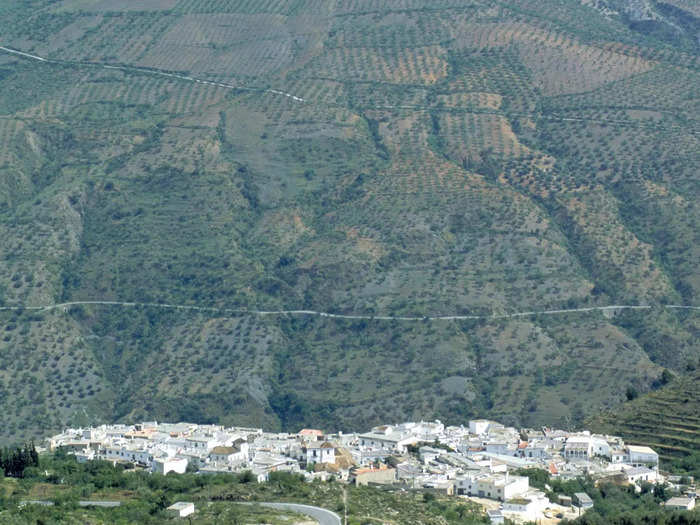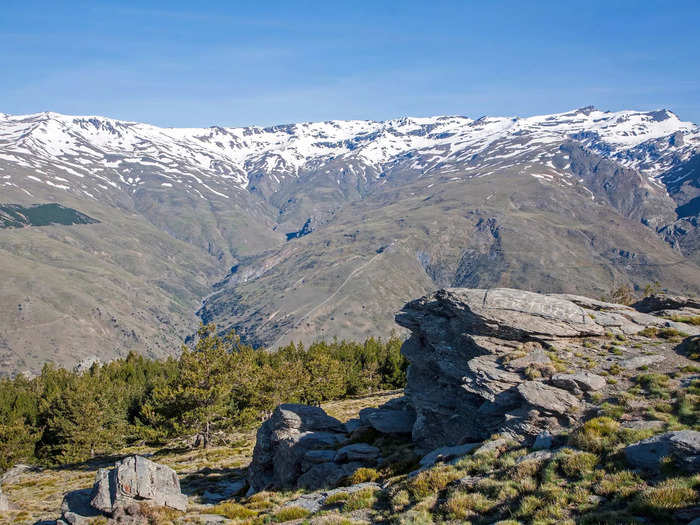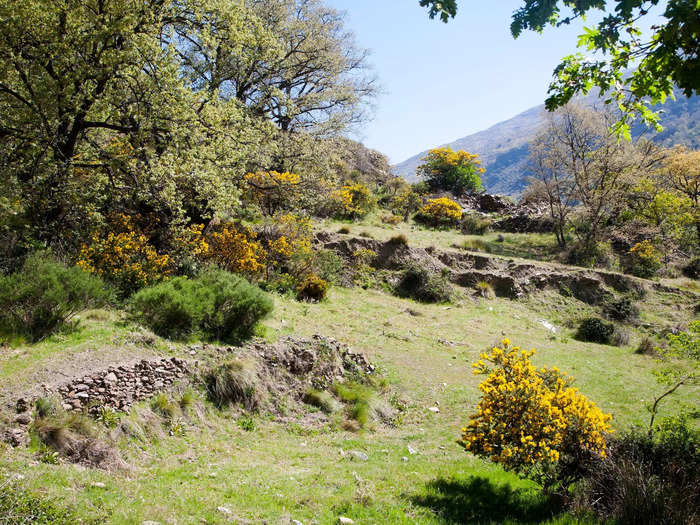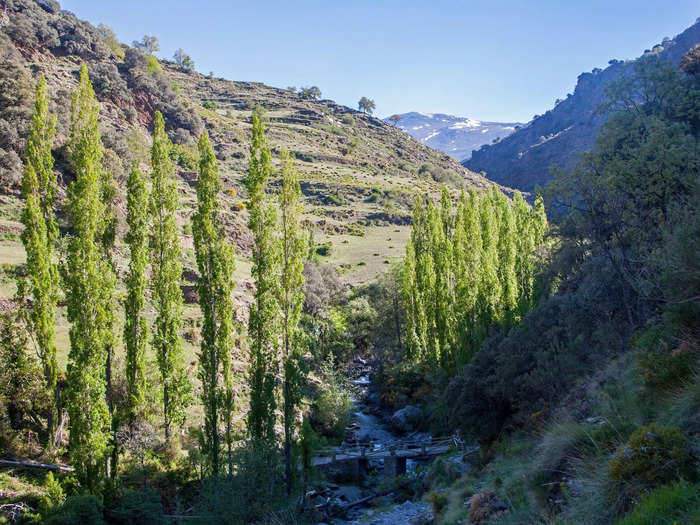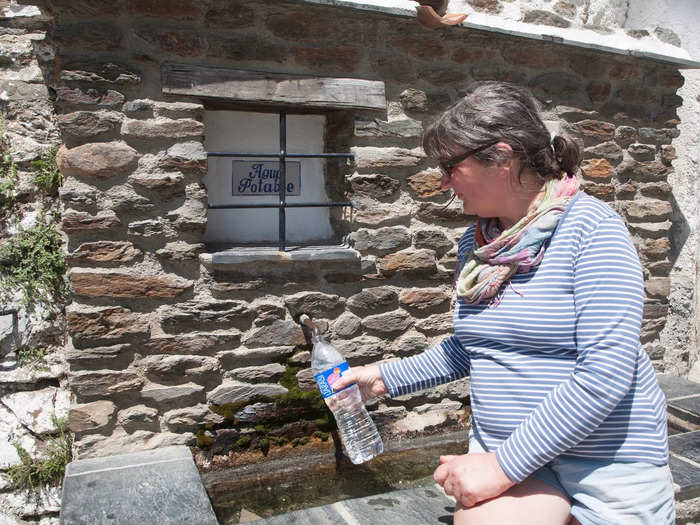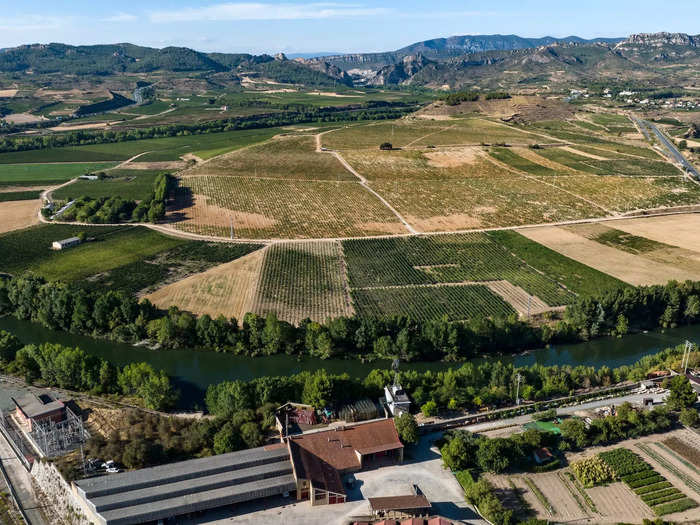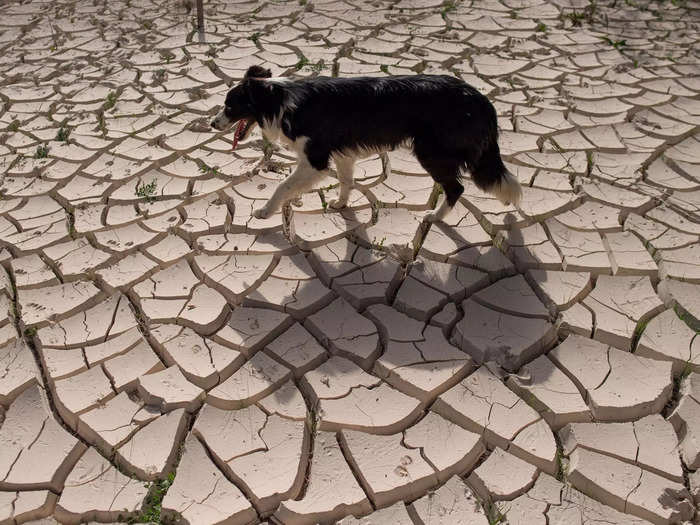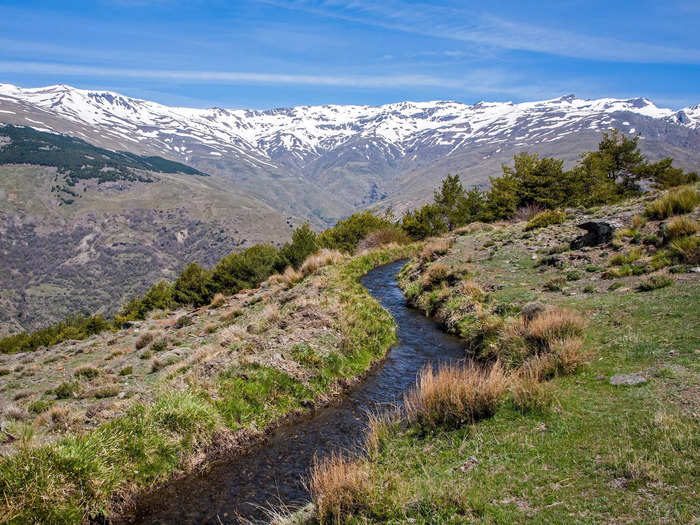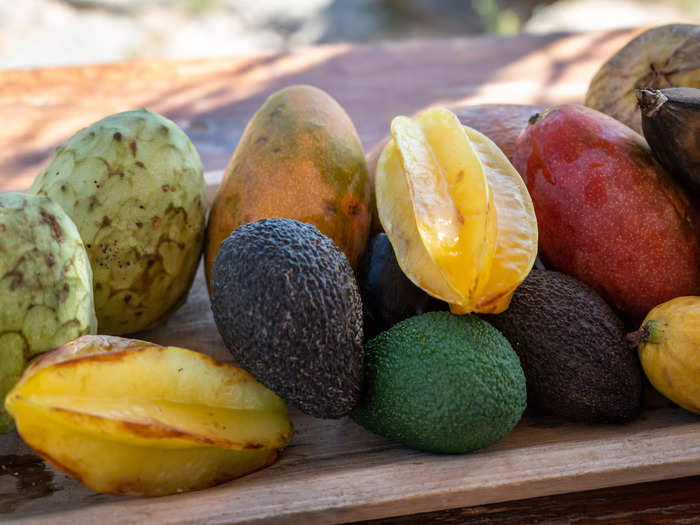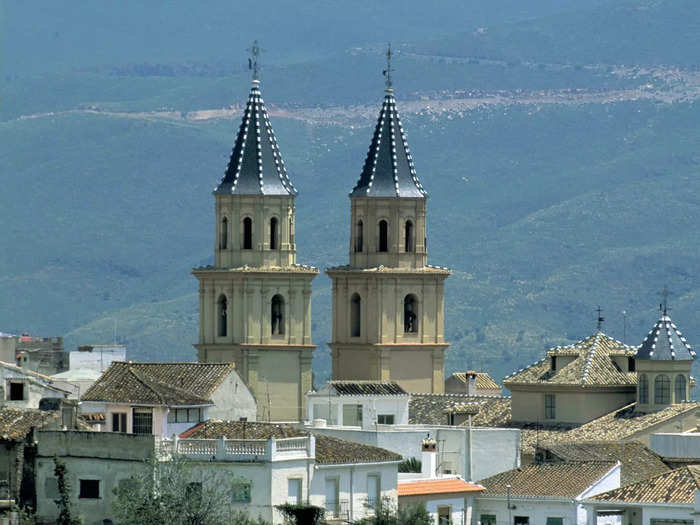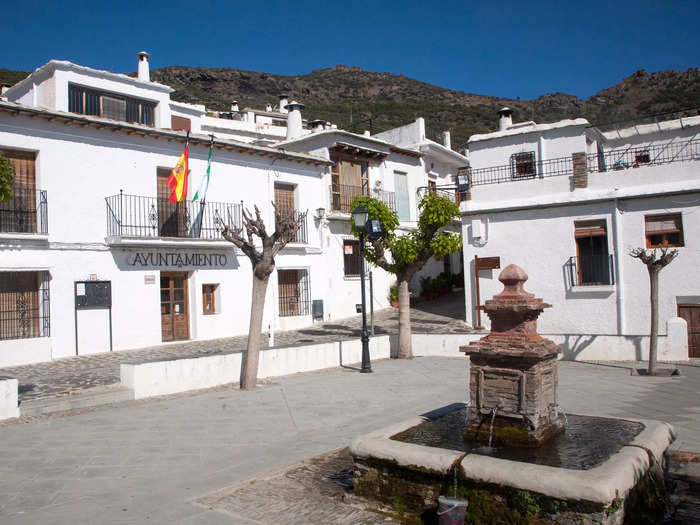A dog walks on a cracked riverbed due to the drought in July 2023.JORGE GUERRERO/AFP via Getty Images
- An ancient Moorish invention could protect Spain from a future of severe droughts.
- The irrigation channels run through 15,000 miles of Spain's mountainous provinces.
A 1,000-year-old Moorish invention may be the answer to Spain's increasing heat problem.
A chain of over 15,000 miles of acequias throughout the mountainous region of Spain is being restored as a low-cost way to bring water to crops during a time of increasing heat and droughts. Acequias are a network of irrigation canals set up by the Moors that bring snowmelt down from the mountains and distribute it to the land below.
Experts believe that the ancient solution will help spread water throughout the arid region of Spain and maintain agrarian practices. The only problem is that few people know how acequias work.
As Spain moved toward an agricultural model that emphasized reservoirs and many in rural communities in Spain moved to cities, knowledge of the acequias system dwindled. Only a handful of people in these communities know how to restore the acequias.
Historians and conservationists are working together to restore these systems and build back the generational knowledge required to operate them.
The acequias, from the Arabic word "as-saqiya" — meaning water conduit — were built by the Moors between the eighth and 10th centuries in what was then known as the Al-Andalus region of the Iberian Peninsula.
A view of the Alhambra Palace in Granada, Spain. Berk Ozkan/Anadolu Agency via Getty Images
The acequias was an elegant solution of moving water that transformed the entire landscape of the mountainous region.
An aerial view of the various crops in the Andalusian area of Spain. Universal Archive/Universal Images Group via Getty Images
Spain's Andalusia region has a Mediterranean climate with long summers and dry winters.
When the Moors introduced the acequias to Spain and used it to move water more effectively through the mountains, they changed the landscape. Now the Andalusian provinces, Granada and Almeria, are the leading agricultural regions in Spain.
The acequias take water from snowmelt and precipitation up in the hills and mountains of Spain.
Landscape of Sierra Nevada Mountains in the High Alpujarras, near Capileira, Granada Province, Spain. Geography Photos/Universal Images Group via Getty Images
By diverting the water into these constructed pathways, the snowmelt is able to slow down and replenish more of the land along the way.
Landscape of the River Rio Poqueira gorge valley. Geography Photos/Universal Images Group via Getty Images
Without the acequias, the snowmelt would run into rivers and lakes that dry in the summer, and the water would have a shorter life.
Landscape of the River Rio Poqueira gorge valley in Spain. Geography Photos/Universal Images Group via Getty Images
Acequias also replenish aquifers and feed streams and rivers that originate further down the mountain. As the water moves through acequias, it soaks into the soil and is stored in the bedrock until it's needed again.
While the water moves through the acequias, it not only replenishes aquifers but it irrigates crops, softens the soil, and even fills fountains throughout the Andalusian region.
Woman filling plastic water bottle from natural spring in the High Alpujarras, Spain. Geography Photos/Universal Images Group via Getty Images
However, in recent decades, the acequias were abandoned in favor of industrial practices.
An aerial view of the vineyards and fields in Spain. David Silverman/Getty Images
Over time, debris, rubble, grass, and other plants have grown over and into the forgotten acequias.
Landscape of the River Rio Poqueira gorge valley. Geography Photos/Universal Images Group via Getty Images
Temperatures have also been increasing in Spain, which have been devastating for farmland.
A dog walks on a cracked riverbed due to the drought in July 2023. JORGE GUERRERO/AFP via Getty Images
The rising temperatures combined with the rise of industrial farms have left the Alpujarra region of Spain barren as water is diverted to larger, more financially lucrative farms.
To combat severe drought and its effects on farms, farmers, volunteers, and researchers in Spain are working together to revitalize acequias systems.
An acequia in the Sierra Nevada Mountains in the High Alpujarras, Granada Province, Spain. Geography Photos/Universal Images Group via Getty Images
Armed with garden tools, shovels, and pickaxes, these volunteer groups work together to help bring water back to drought-stricken areas.
Thanks to the restored acequias, farmers have said that they've been able to regrow fruit crops again.
A collection of tropical fruit from a tropical fruit farm in Almeria, Spain. Edwin Remsberg/VWPics/Universal Images Group via Getty Images
However, the ancient technology presents a unique set of problems.
A hillside photo of the Alpujarra region of Spain. Universal Archive/Universal Images Group via Getty Images
In order to maintain functional operation, these communities need to build back strong generational knowledge of acequias.
As fewer people live in rural areas, the cultural knowledge of where acequias are located and how they work has diminished.
Houses in the village of Bubion, High Alpujarras, Sierra Nevada, Granada province, Spain. Geography Photos/Universal Images Group via Getty Images
The disappearance of this knowledge makes it harder to find acequias and know how to operate them.
In an interview with BBC, Jose Antonio Peña, an "acequiero" who tends to the acequias, said these customs are being lost because, "young people don't want to know about it."
Because the money produced by local farming can't compete with larger-scale industrial agriculture, there's a lack of financing for acequias reconstruction.
Spanish farmers using a machine to mow a wheat field. Joan Cros/NurPhoto via Getty Images
"If you understand efficiency in terms of multifunctionality, then the traditional irrigation systems are much more efficient. They better retain water, they recharge the aquifers, they improve the fertility of the soils," Martín Civantos, a Spanish archaeologist coordinating the acequias project, told the New York Times.


